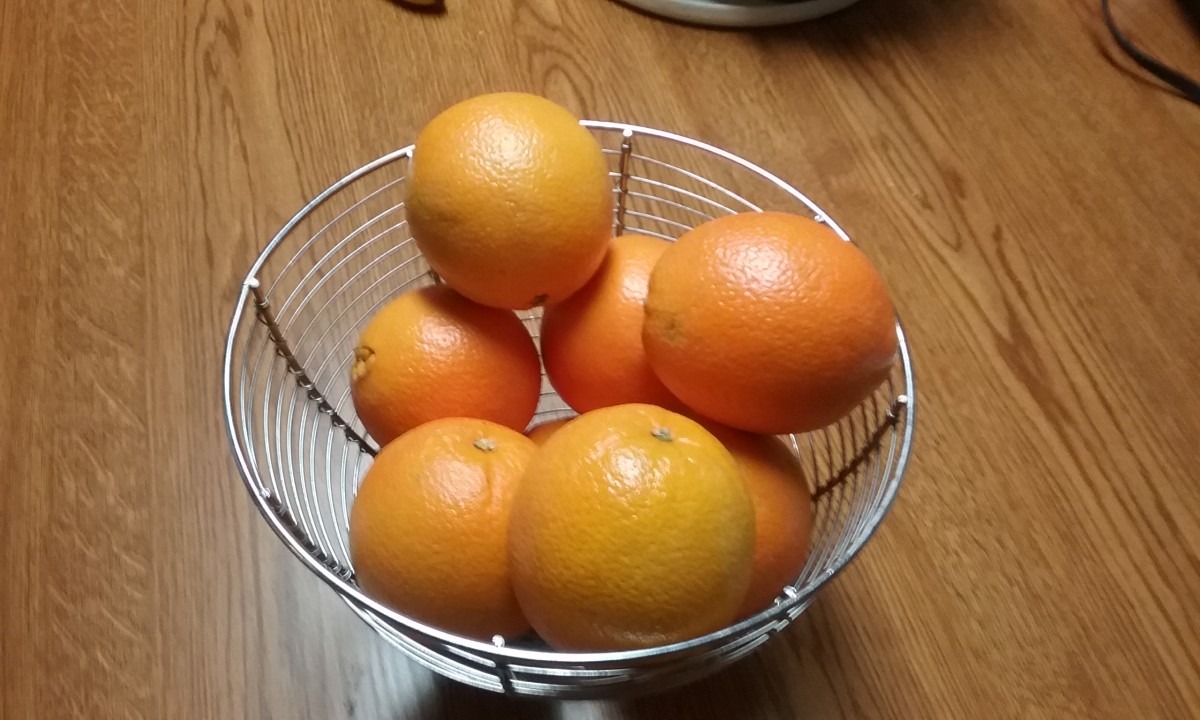What Is Influenza or Flu and Ways to Prevent It

The Flu Season
Although you can become ill with the flu at any time during the calendar year, the months of October through May are designated as the period during which the greatest number of people become ill with influenza. Traditionally, the months of January and February have the highest numbers of this viral illness.
Just about everyone is familiar with the many signs and symptoms of the flu, including body aches, cough, runny nose or stuffy nose, tiredness, headache and/or sore throat. Not everyone who gets the flu will necessarily experience all of these symptoms, but generally, most people have two or more of them. Some people encounter fever with the flu, others do not. Vomiting and diarrhea may also be present, but the U.S. Centers for Disease Control and Prevention explain that these two symptoms occur most often in children.
Unlike a cold, which usually has prodromal, or warning signs, a day or two ahead of a full-blown cold, the flu usually has a sudden onset.
- Cold & Flu Symptoms List & Chart
Is it a cold or the flu? This chart should help explain your symptoms.
Symptoms of Influenza Versus Symptoms of a Cold
Flu Symptoms
| Cold Symptoms
|
|---|---|
Fever
| Rarely Fever
|
Headache
| Rarely Headache
|
Severe body aches
| Slight body aches
|
Severe weakness, exhaustion
| Mild weakness, fatigue
|
Information courtesy of WebMD.com
Influenza in History
Epidemics of the flu happen nearly every year. An epidemic is a temporary prevalence of a disease. Pandemics--the prevalence of an illness throughout an entire country, continent, or the entire world--occur less frequently.
In the United States, the largest and most severe influenza pandemic occurred in the period of 1918 to 1919. This pandemic, also referred to as the Spanish Flu, affected the entire globe, with more than 50 million deaths attributed to the flu during the period. In the United States alone, more than 675,000 deaths occurred. The flu strain in that period affected not only the usual high-risk groups, but also healthy adults, particularly in the 20 to 50 year-old age group.
The sheer numbers and widespread areas around the globe in this pandemic make it the one against which all other pandemics now and in the future will be compared.
In the period of 1957 to 1958, a flu pandemic began in the Far East. Due to improved scientific technology, the virus strain responsible for this influenza was quickly identified and a vaccine was ready for limited use by August 1957. The virus spread to the United States during the summer of 1957; 69,000 people--mostly elderly--died in the U.S. during this Asian flu pandemic.
By 1968 to 1969 when the Hong Kong flu was pandemic, the total number of deaths was reduced to 33,800, according to flu.gov. The theories for this decrease in deaths attributed to this strain of influenza include the fact that the Asian flu strain, which was present from 1957 to 1968, might have afforded people exposed to it some resistance to the Hong Kong flu strain. Another theory is that improved medical care and the use of antibiotics against secondary bacterial infections from the flu, such as pneumonia, were effective and prevented deaths due to complications from the flu.
The most recent pandemic was that of the H1N1 flu strain from 2009 to 2010. During this period the United States Centers for Disease Control and Prevention acted quickly to develop a vaccine against the H1N1 influenza strain. Initially, the vaccine was available only to limited high-risk groups, but by November 2009, 61 million vaccine doses were available to the general public.
The pandemic affected 74 countries throughout the world. The CDC reported that 80 million people received H1N1 flu vaccines and between 8,870 and 18,300 people died during the period from this strain of influenza.
Symptoms of H1N1 Flu--Swine Flu
What Causes Influenza?
Simply put, influenza is caused by a virus. There are two basic types of flu viruses that lead to epidemics of the illness: Type A and Type B. The influenza Type A viruses can then be broken down into various sub-types. Each strain of influenza is named for the type of causative virus.
The flu virus affects your respiratory system, including nose, throat and lungs, explains the Mayo Clinic.
In order to become sick with the flu, first you must be exposed to one of the viruses.
Even people in good health can get the flu, but those with poor nutrition, weakened immune systems or some chronic diseases will be more at risk of not only acquiring the flu, but also developing health complications from the illness.
Why Flu Vaccination Matters
Seasonal Flu Vaccinations
Health officials throughout the country, including the U.S. Centers for Disease Control and Prevention and the Mayo Clinic advise the number one way to avoid becoming ill with the flu is to receive a flu vaccine. This year, the CDC is recommending that everyone 6 months and older receive the flu vaccination.
Vaccines are developed each year to protect against the type of viruses expected to be prevalent during that time period. Data from around the globe is researched and examined by the World Health Agency to determine what vaccination should be developed for the coming flu season.
Each year the flu vaccine developed in the United States is a trivalent vaccine, meaning it protects against three different strains of influenza. The vaccine available for use for the 2012-2012 flu season is designed to provide protection against an H1N1, H3N2, and a strain of the B/Yamagata line of viruses.
H1N1 was a viral strain in the 2011-2012 flu season vaccination, while the other two viral strains are new to this year's flu season.
Good Handwashing Technique
Looking for More Flu-Related Information? Check out these Hubs:
- Differences Between the Common Cold, Seasonal Flu, and H1N1 Symptoms
- Top Immune System Boosters for Winter and Flu Season
- Prevent Flu With Immune Boosting Foods
- Natural Remedies for Colds, Flu, Sinusitis, and Infections
Treat you cold, flu, and sinusitis symptoms with natural remedies. Nose & Sinus Symptoms: Saline wash, Hot towel, Facial steamer, Herbal teas. Throat Symptoms: Salt water gargle, Clay pack, Slippery elm. Ear Symptoms: Garlic and olive oil, - H1N1 Swine Flu - A Personal Account of Symptoms & Recovery Time
A personal account of the symptoms of H1N1 Swine Flu plus recovery time. Last year talk about the H1N1 Flu Virus was everywhere then it all died down... - H3N2 Symptoms - H3N2
How to Avoid the Flu at Home and Work
Although the flu vaccines are very effective in flu prevention, they are not 100 percent effective, nor will everyone take the flu vaccine. There are precautions you should take to protect yourself from illness. Proper hand washing is a valuable tool in your arsenal of weapons against influenza--and against most communicable diseases.
Washing your hands under running water, using soap, and rubbing the surfaces of your hands together will eliminate most of the organisms your busy hands have gathered. The soap need not be antibacterial and the water need not be hot. The lathering of the soap, the mechanical action of rubbing hand surfaces, and the flow of clear water to rinse are the important components of this preventive measure.
Use of a hand sanitizer should be confined to those times and places when you can't wash your hands with soap and water.
When possible, avoid going among crowds of people during the height of the influenza season. If you have a doctor's appointment, call ahead to see how closely the doctor is running on schedule--that way you can minimize your time in the waiting room with people who may be ill.
Influenza is spread by droplets, such as when someone ill with the flu coughs, sneezes or talks. You can become ill by inhaling the live virus in the unseen droplets, or touch a surface the droplets have touched.
Telephones, cell phones, door handles, even the toilet handle may be contaminated with the flu virus. Keeping these items and other multi-use surfaces and items clean will help to eliminate sources of illness-causing virus.
Additional Preventive Measures
Maintaining your overall good health is important to keep your immune system functioning optimally. Your immune system helps to destroy infectious organisms in your body before they can cause illness.
Eating a well-balanced, nutritional diet will go a long way to promoting the health of your entire body. Engage in regular physical activity 15 to 30 minutes most days of the week. Staying well-hydrated is also important, preferably with water being the fluid you drink most often.
Keep your skin moisturized to prevent the small cracks that can occur in dry skin. These tiny cracks are portals for infectious organisms.






